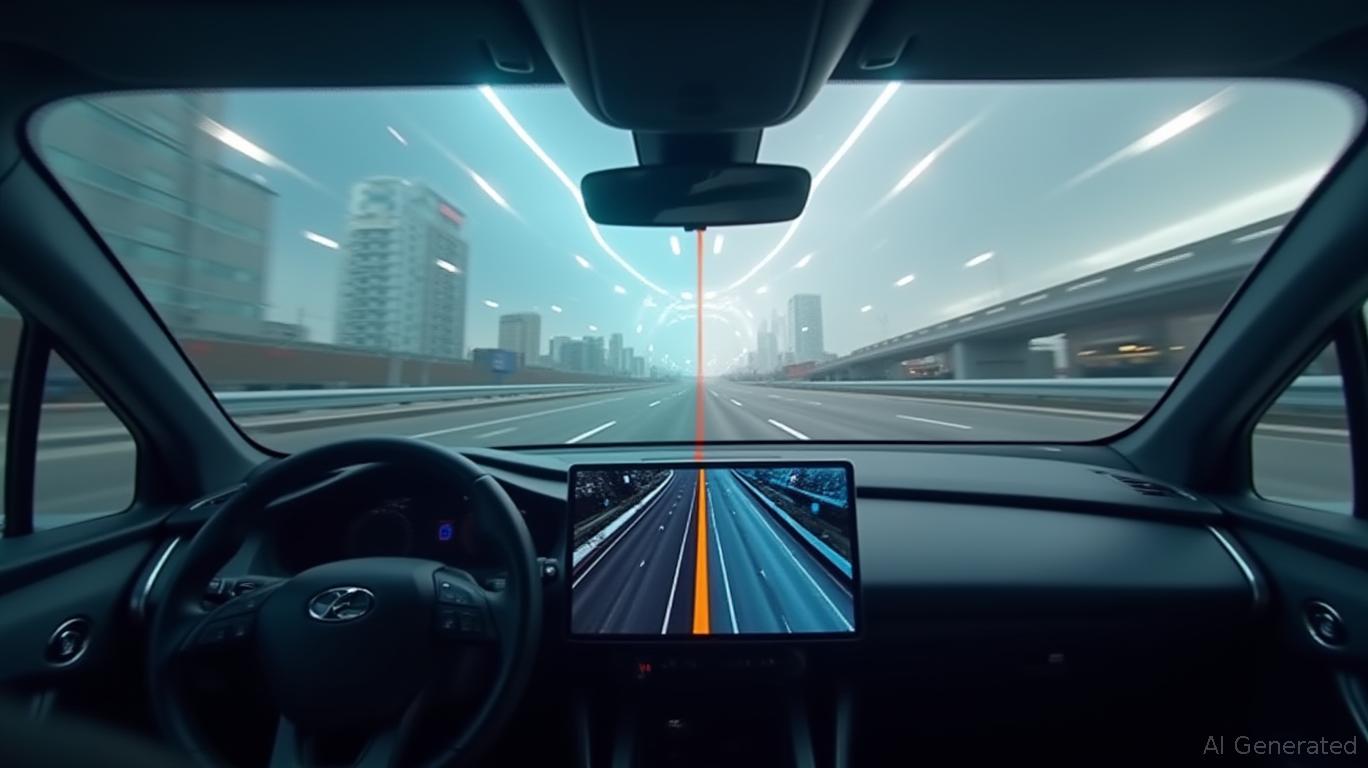Beamr Imaging's CABR Technology: A Game-Changer for Autonomous Vehicle Data Challenges
The autonomous vehicle industry faces a silent crisis: data overload. Each self-driving car generates terabytes of video data daily, and training machine learning models requires petabytes of data. Storing and processing this information strains budgets and infrastructure. Enter Beamr Imaging's Content-Adaptive Bitrate (CABR) technology, a GPU-accelerated video compression solution that could redefine how autonomous vehicle companies manage data.
At its core, CABR reduces video file sizes by up to 50% without sacrificing visual quality or the critical details needed for AI training. This breakthrough is validated by rigorous testing: real-time object detection models maintain accuracy even after compression, ensuring reliable decision-making. For an industry grappling with skyrocketing storage and compute costs, this is a lifeline.

Strategic Implications: Cost Reduction and Scalability
The autonomous vehicle sector's data problem is twofold:
1. Storage Costs: Companies spend millions on cloud storage and on-premises infrastructure. CABR slashes this burden by halving the data volume, directly lowering operational expenses.
2. Compute Efficiency: By reducing file sizes, CABR lightens the load on GPU clusters, accelerating training cycles and enabling faster iteration of AI models.
For example, a fleet of 1,000 autonomous vehicles producing 1TB of data daily would generate 365 petabytes annually. With CABR, that shrinks to 182.5 petabytes—a saving of over $2 million in cloud storage costs (assuming $11/TB/month). This efficiency also makes it feasible to store and analyze edge-case scenarios, improving safety and regulatory compliance.
The technology's integration with NVIDIA GPUs and synthetic data platforms like Omniverse further amplifies its value. By optimizing both real-world and synthetic training data, CABR becomes a bridge between simulation and reality, accelerating the path to Level 5 autonomy.
Market Momentum and Financial Realities
Beamr's Q1 2025 results hint at growth potential but also reveal execution risks. Revenue rose 55% year-over-year to $0.63 million, driven by existing media partnerships (e.g., Netflix, Paramount) and cloud platform integrations (AWS, Oracle). However, the company attributes this growth to timing of license renewals, not yet CABR's commercial impact.
Investors are split: Susquehanna International Group increased its stake, while Morgan Stanley and Jane Street reduced holdings. A would clarify its path to profitability. The lack of new autonomous vehicle partnerships in 2025 also raises questions—will Beamr's focus on media and cloud sales pivot to AV-specific contracts?
Risks and Opportunities
- Technical Adoption: Autonomous vehicle companies must trust CABR's compression doesn't compromise safety-critical data. Third-party validation from industry bodies like SAE International could boost confidence.
- Competitor Landscape: Established players like NVIDIA and AWS are developing compression tools in-house. Beamr's edge lies in its specialization—a standalone solution optimized for AV-specific workloads.
- Market Penetration: To justify its valuation, Beamr must secure deals with major AV players (e.g., Waymo, Cruise). Its presence at NVIDIA GTC Paris is a start, but partnerships with automakers or sensor manufacturers could accelerate adoption.
Investment Thesis
Beamr Imaging is a high-risk, high-reward bet for investors with a long-term horizon. The CABR technology addresses a critical pain point in autonomous driving, and its 50% compression rate is a hard-to-ignore differentiator. However, the company's reliance on existing partnerships and slow revenue growth suggest caution.
Recommendation:
- Hold: For now, given the lack of concrete AV partnerships and modest revenue.
- Buy: If Beamr announces a major AV contract or demonstrates CABR's impact on Q2/Q3 revenue.
- Monitor: Track NVIDIA's GPU sales tied to autonomous driving () as an indicator of ecosystem health.
A historical analysis of Beamr's stock performance around earnings events reinforces this cautious stance. Backtesting a strategy of buying the stock five days before each quarterly earnings announcement and holding for 20 days from 2020 to 2025 revealed an average return of -17.22%, with a maximum drawdown of -75.32% and volatility of 41.56%. This strategy also had a Sharpe ratio of -0.09, indicating unfavorable risk-adjusted returns. These results suggest that timing the market around earnings announcements has historically carried significant risk with little reward, further supporting a “Hold” stance until clearer catalysts emerge.
Conclusion
Beamr's CABR is a technological tour de force, but execution remains the hurdle. The autonomous vehicle industry's data challenges are too pressing to ignore such a solution, but investors must wait for tangible commercial traction. For those willing to bet on data-driven innovation, Beamr could be a foundational player in the autonomous revolution—if it can close the gap between promise and profit.

Comments
No comments yet